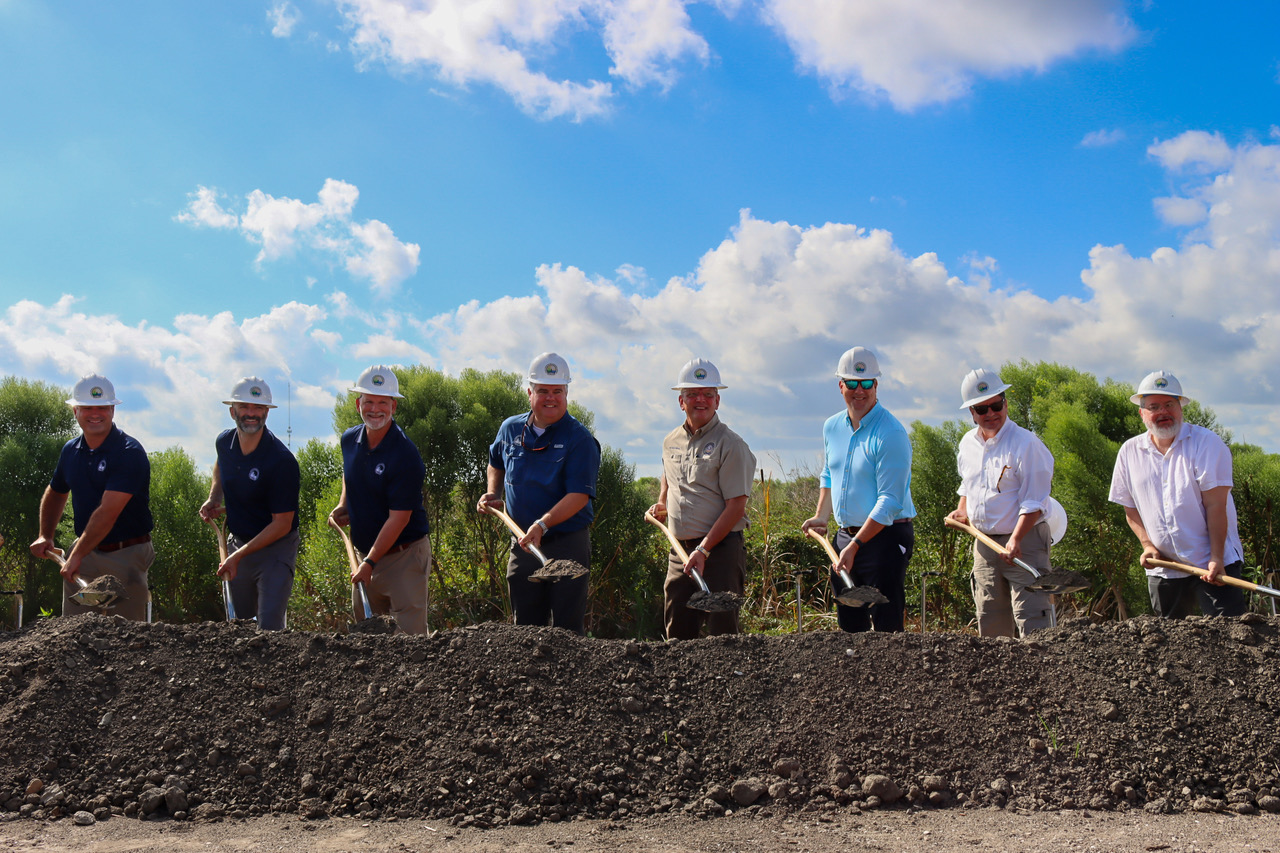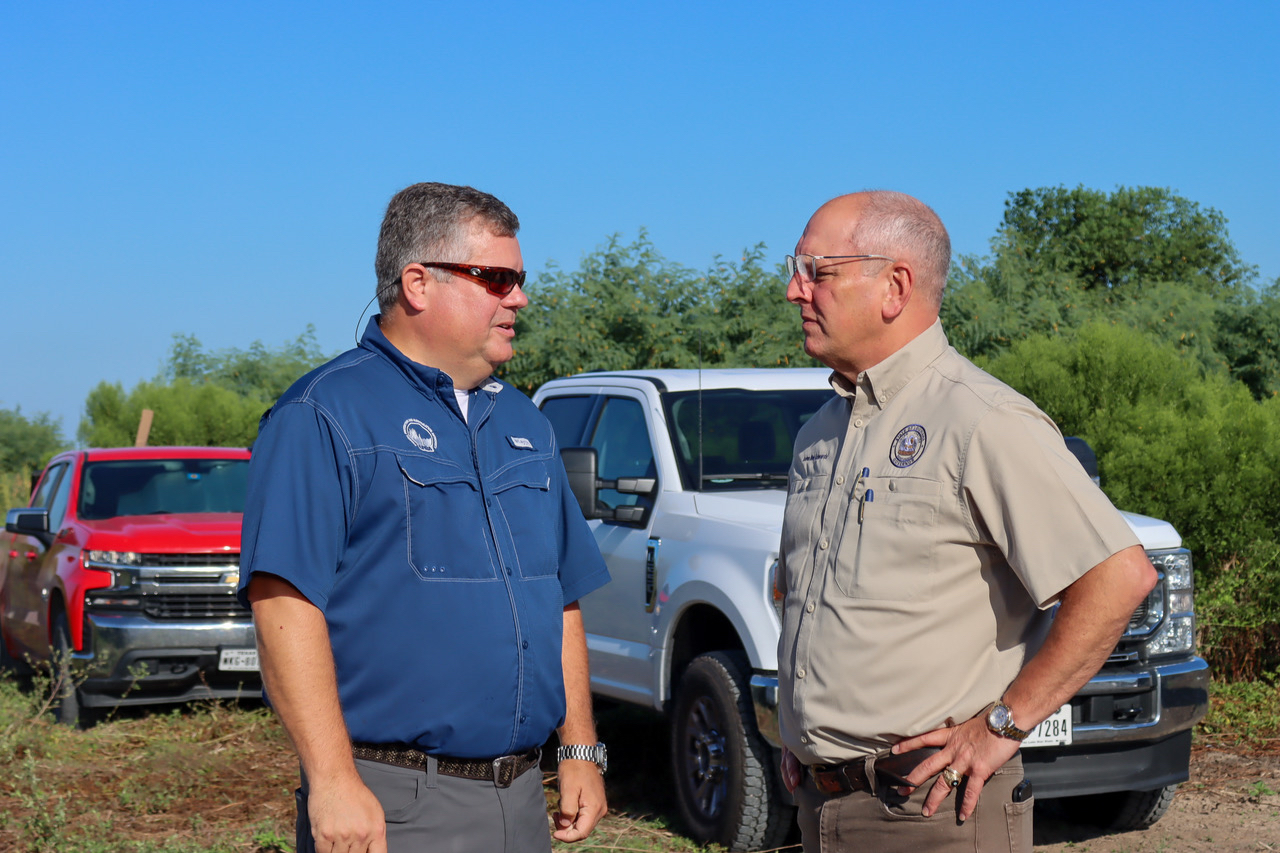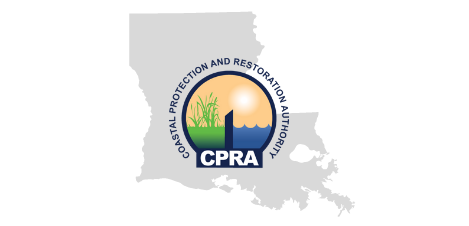Sign Up. Stay Informed.
August 10, 2023
Contact: coastal@la.gov

BELLE CHASSE, La. – Today, Gov. John Bel Edwards joined the Louisiana Coastal Protection and Restoration Authority (CPRA), as well as several federal and state leaders, to officially break ground and begin construction on the Mid-Barataria Sediment Diversion. The project is widely regarded as the most ambitious environmental restoration project in the state’s history.
Once operational, the first-of-its-kind project will harness the land-building power of the Mississippi River to build and sustain up to 26,000 acres of wetlands in the Barataria Basin—an area experiencing some of the highest rates of land loss in the world.
“Today will be remembered as a critical turning point for Louisiana’s coast,” said Gov. John Bel Edwards. “The Mid-Barataria Sediment Diversion will restore and rebuild thousands of acres of coastal land and provide better protection to our most vulnerable communities and critical infrastructure. I’m grateful to CPRA and our federal, state, and local partners for their decades-long effort to make this first-of-its-kind project a reality.”
Sediment diversions are designed to mimic the natural processes that created Louisiana by reconnecting the Mississippi River to surrounding wetlands. Such projects have been called for in studies of Louisiana’s coast for more than 100 years, including each iteration of Louisiana’s Master Plan for a Sustainable Coast.
“Today’s groundbreaking marks the dividing line between talking about bold action to save our coast and actually taking it,” said CPRA Chairman Bren Haase. “This groundbreaking is the culmination of decades of hard work and committed partnerships. Federal, state, and community leaders have worked together with scientists, area residents, engineers, fishers, and many more to bring this unprecedented project from concept to reality. I look forward to seeing the Mid-Barataria Sediment Diversion restore much of the Barataria Basin and provide a brighter future for our coast and all who depend on it.”
Project features include a controlled gate structure through the river’s levee, a manmade channel, and outfall structure in the basin. Construction is anticipated to take over five years to complete and is projected to produce an economic impact of nearly $1.5 billion in sales and approximately 12,400 jobs in the region.
“Since 2016, CPRA has built larger and more complex projects to match the growing scale of our land loss challenges. However, the Mid-Barataria Sediment Diversion is in a league of its own. The project represents unmatched land building power and long-term sustainability,” said CPRA Deputy Executive Director, Greg Grandy. “We’re not only building a globally significant infrastructure project that will serve us for decades, but furthering Louisiana’s position as a leader and innovator in environmental restoration, coastal resilience, and water management.”
The U.S. Army Corps of Engineers (USACE) approved permits and permissions for the Mid-Barataria Sediment Diversion in December 2022 after completing an extensive environmental review and analysis of the project. Construction funding was approved in early 2023 through two respective agreements with the Louisiana Trustee Implementation Group (LA TIG) and the National Fish and Wildlife Foundation’s (NFWF) Board of Directors. The LA TIG is the collection of state and federal agencies responsible for overseeing and approving spending of Deepwater Horizon oil spill natural resource damages settlement dollars in Louisiana, while NFWF oversees the spending of associated criminal fines paid by BP.
In addition to construction and operation, another major component of the project includes investments in communities and natural resources, like fisheries, that may be impacted by project operations. Mitigation and stewardship measures were developed based on feedback gathered from residents and stakeholders over the last several years. CPRA and its contractors have already started surveying activities in these communities, which are expected to continue through the fall of 2023. CPRA has also identified avenues and partnerships for $10 million that will support implementation of near-term fisheries stewardship measures. These measures were prioritized based on the ability to meet current, urgent needs of the fisheries and expanded effectiveness with near-term implementation. Implementation of the project’s mitigation plan is an ongoing process that will take place before, during, and after project construction and operations.
###



